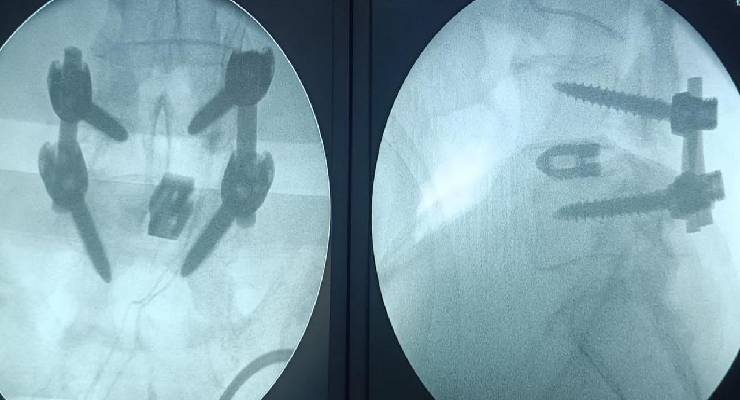
Lumbar fusion surgery is a procedure used to treat conditions affecting the lower (lumbar) spine, particularly when there is instability or abnormal motion between two or more vertebrae. The surgery involves joining two or more vertebrae together (fusion) to stabilize the spine and alleviate pain. Lumbar fusion surgery is typically recommended for conditions such as degenerative disc disease, spondylolisthesis (slipped vertebra), spinal stenosis, spinal deformities (such as scoliosis), spinal fractures, and recurrent disc herniation that have not responded to conservative treatments like medication, physical therapy, or injections.
Dr. Phani Kiran S, specialist in Lumbar Fusion Surgery at Medspine in Chennai, with over 10 years of experience, ensures optimal outcomes for patients undergoing this procedure.
The surgeon removes the intervertebral disc and inserts a bone graft or interbody cage between the vertebrae to promote fusion and restore disc height.
The surgeon accesses the spine through a small incision, removes the disc, and inserts a bone graft or interbody cage to facilitate fusion.
The surgeon removes the damaged disc and inserts a bone graft or interbody cage between the vertebrae to promote fusion. This approach allows for better access to the disc space and may avoid damage to the spinal nerves.
The surgeon accesses the spine through a small incision in the flank and removes the disc, then inserts a bone graft or interbody cage to promote fusion. This approach can avoid major nerves and blood vessels and may reduce the risk of complications associated with anterior or posterior approaches.
Minimally invasive techniques may be applied to any of the above fusion approaches, with the goal of reducing muscle damage, blood loss, and recovery time while achieving similar fusion outcomes.
Combines both anterior and posterior approaches to achieve fusion. The surgeon performs both anterior and posterior fusion surgeries in one procedure, often to address complex spinal conditions or achieve greater stability.
It is a surgical intervention specifically for treating disc herniations in the lower back (lumbar region). Surgeons use an endoscope to remove portions of the herniated disc that are causing pain and other symptoms by exerting pressure on nerve roots.
It is similar in purpose to endoscopic lumbar discectomy, focuses on the treatment of herniated discs. However, it involves specialized microsurgical techniques and instruments in addition to the endoscope.
Endoscopic Cervical Discectomy targets disc herniations in the neck (cervical region). Surgeons remove the herniated parts of a cervical disc that are compressing the spinal cord or nerve roots.
The Ortho Clinic: Monday, Wednesday, Friday, Saturday.
Ojas Health: Tuesday, Thursday
© Copyright 2024 MedSpine. All Rights Reserved. Build with 🤍 by Digital GYB
WhatsApp us